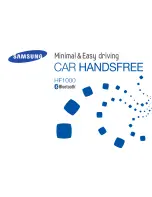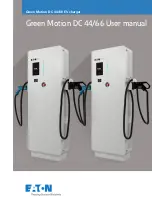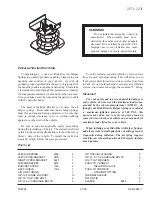
Auto Down Feature
The driver door power window switch, and some model
passenger door power window switches have an auto
down feature. Press the window switch to the second
detent, release, and the window will go down automati-
cally.
To open the window part way, press the window switch
to the first detent and release it when you want the
window to stop.
To stop the window from going all the way down during
the auto-down operation, pull up on the switch briefly.
The power window switches remain active for 10 min-
utes after the ignition switch has been turned off. Open-
ing either front door will cancel this feature. The time is
customer programmable through the Electronic Vehicle
Information Center (EVIC) — If Equipped. Refer to
“Delay Power Off to Accessories Until Exit” under “Per-
sonal Settings” in the Electronic Vehicle Information
Center section of this manual for details.
Wind Buffeting
Wind buffeting can be described as the perception of
pressure on the ears or a helicopter type sound in the
ears. Your vehicle may exhibit wind buffeting with the
windows down, or the sunroof (if equipped) in certain
open or partially open positions. This is a normal occur-
rence and can be minimized. If the buffeting occurs with
the rear windows open, open the front and rear windows
together to minimize the buffeting. If the buffeting occurs
with the sunroof open, adjust the sunroof opening to
minimize the buffeting.
OCCUPANT RESTRAINTS
Some of the most important safety features in your
vehicle are the restraint systems. These include the front
and rear seat belts for the driver and all passengers, front
airbags for both the driver and front passenger and, if so
equipped, left and right side curtain airbags for the
driver and passengers seated next to a window. If you
will be carrying children too small for adult-size belts,
your seat belts also can be used to hold infant and child
restraint systems.
28
THINGS TO KNOW BEFORE STARTING YOUR VEHICLE
Summary of Contents for 2005 LX Magnum
Page 2: ......
Page 5: ...INTRODUCTION 5 1...
Page 8: ......
Page 81: ...UNDERSTANDING THE FEATURES OF YOUR VEHICLE 81 3...
Page 82: ...82 UNDERSTANDING THE FEATURES OF YOUR VEHICLE...
Page 83: ...UNDERSTANDING THE FEATURES OF YOUR VEHICLE 83 3...
Page 131: ...INSTRUMENTS AND CONTROLS UNDERSTANDING YOUR INSTRUMENT PANEL 131 4...
Page 132: ...STANDARD INSTRUMENT CLUSTER 132 UNDERSTANDING YOUR INSTRUMENT PANEL...
Page 133: ...PREMIUM INSTRUMENT CLUSTER UNDERSTANDING YOUR INSTRUMENT PANEL 133 4...
Page 191: ...UNDERSTANDING YOUR INSTRUMENT PANEL 191 4...
Page 195: ...Operating Tips UNDERSTANDING YOUR INSTRUMENT PANEL 195 4...
Page 196: ......
Page 227: ...STARTING AND OPERATING 227 5...
Page 265: ...WHAT TO DO IN EMERGENCIES 265 6...
Page 275: ...2 7L ENGINE MAINTAINING YOUR VEHICLE 275 7...
Page 276: ...3 5L ENGINE 276 MAINTAINING YOUR VEHICLE...
Page 277: ...5 7L ENGINE MAINTAINING YOUR VEHICLE 277 7...
Page 322: ......
Page 348: ......
Page 349: ...INDEX 10...
Page 363: ...NOTES...
Page 364: ...NOTES...
Page 365: ...NOTES...
Page 366: ...NOTES...
Page 367: ...NOTES...
Page 368: ...NOTES...
















































